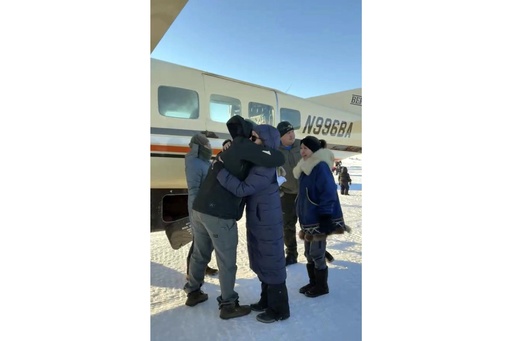ANCHORAGE, Alaska — A commuter flight that tragically went down on the sea ice of Alaska last week resulted in the loss of all 10 individuals on board. This flight was part of an essential network of short-distance flights that residents heavily rely on for various activities, including attending medical appointments, participating in work meetings, purchasing essential goods, or heading to out-of-town sporting events.
Two of the passengers were on a mission to service a heat recovery system crucial for a local water treatment facility. A former educator was traveling to mentor other teachers, while another individual was en route to a medical consultation.
Due to Alaska’s vastness, the size of the state can be hard to grasp; a postage stamp placed on an average sheet of paper would represent the distance a person could cover using a boat, car, or train. Outside the main population route that spans 360 miles from Anchorage to Fairbanks, about 80% of Alaska’s communities are cut off due to limited road access.
At a press conference held in Washington, D.C., federal representatives highlighted the safety of air travel and cited a decline in accident rates over recent years in Alaska. However, they acknowledged that further improvements are necessary, particularly in addressing locals’ concerns regarding infrastructure issues, which include failures of runway lights and a lack of dependable weather observation systems.
The state’s diverse landscape, encompassing mountains, glaciers, lakes, dense forests, and expansive tundra, poses challenges for aviation. Rapidly changing weather conditions add another layer of difficulty, with localized microclimates causing discrepancies in weather reports from nearby airports. “Weather in Alaska can be extremely unpredictable. If there’s any state that needs reliable weather information, it’s Alaska,” said U.S. Transportation Secretary Sean Duffy. He also stressed the importance of dependable telecommunications and pledged to collaborate with Alaska’s congressional representatives and federal agencies to enhance aviation safety measures.
For countless residents, flying is their sole connection to the outside world, as state transportation department spokesperson Dylan Blankenship explained. “A mile of road only gets you a mile, but a mile of runway allows you to reach any destination.”
Last week, the single-engine turboprop operated by Bering Air, which was integral to this transport network, crashed while making its way from Unalakleet to Nome, covering approximately 150 miles. The wreckage was discovered on an ice floe in Norton Sound, southwest of Nome, following extensive search efforts the day after the incident. Investigations are ongoing to determine the crash’s cause, which has turned into one of the most deadly aviation accidents in the state in the last quarter-century.
The victims included Rhone Baumgartner, 46, and Kameron Hartvigson, 41, who traveled to Unalakleet on business related to the community’s water facility. Another victim, Talaluk Katchatag, 34, was seeking medical treatment, while Carol Mooers, 48, a school counselor, was flying to introduce students to colleges in Anchorage and Juneau.
Another passenger, Liane Ryan, who resided in Wasilla, was participating in a mentoring program for teachers in Unalakleet. The school where she previously taught, Redington Junior/Senior High School, honored her as a “pillar of joy and positivity,” reflecting on her radiant impact on students, staff, and community members alike.
Bering Air operates flights to 32 villages across western Alaska from hubs located in Nome, Kotzebue, and Unalakleet, ensuring that most destinations have scheduled flights twice a day from Monday to Saturday. Following the crash, the airline released a heartfelt statement expressing their sorrow and support for the families affected by this tragedy. “Our hearts are heavy with grief as we process this heartbreaking news,” the statement read.
In the wake of the accident, residents showed their solidarity with Bering Air by welcoming pilots in various rural communities like Golovin, an Inupiat Eskimo village. Despite the harsh weather, the community turned out to greet the returning pilots, displaying signs of support that read, “We love Bering Air” and “Golovin loves you, Bering Air.”“Everybody was in tears,” stated Irene Navarro, a lifelong resident who captured the emotional gathering live on social media. “We just wanted to show our love and let them know we’re still here and still their customers.”



